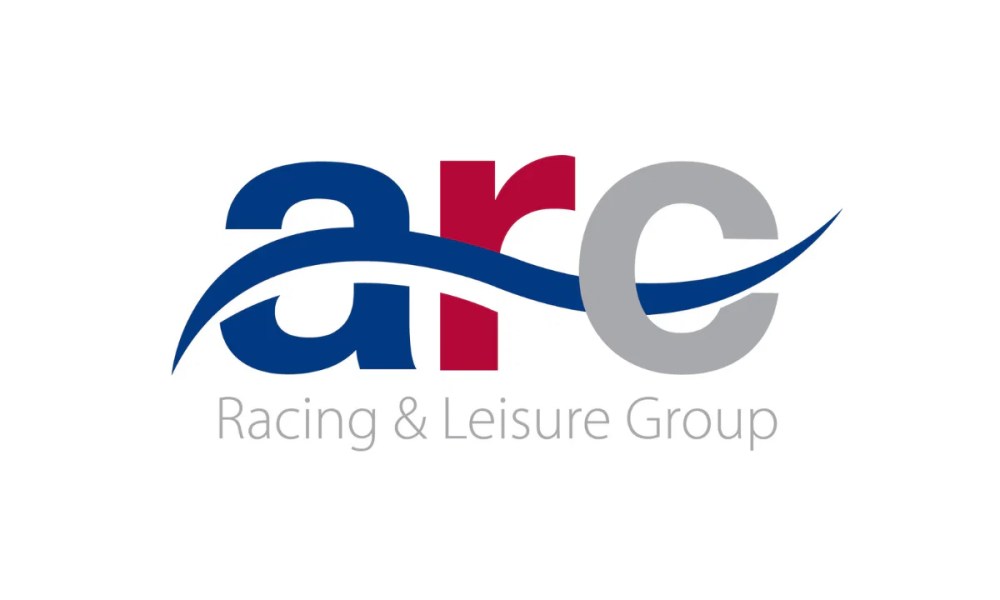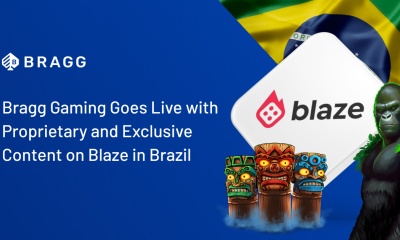Gaming
Gaming is in the mainstream and it’s here to stay

By Tobias Knutsson, CEO, Adverty
It’s taken a lot to finally rub out marketers’ lingering belief that gaming is a thing for kids, a niche media channel, a flash in the pan. The pandemic did some of the final lifting, but in a gaming business that is booming on all sides, absorbing women, older people, obsessive Esports fans, cloud gamers, monthly subscribers – you name it – the numbers are now unignorable: an estimated audience of somewhere between 2.5bn and 3bn+, with a global value of $162.32bn last year. If that’s not mainstream, what is?
Nike, Coca-Cola, Redbull, even Gucci and L’Oréal have all waded into the gaming space, and smaller brands with more modest budgets are beginning to follow. So gaming is having a moment that started some time ago and promises to last – what should its exponents do to maximise it and build strong, sustainable connections with brands?
Hold their hands
Brands that are new to gaming often lack in-house expertise and even background knowledge. As with social media, gaming needs dedicated experts on the client side, and inevitably brands will recruit their own, but until that part of the puzzle falls into place, it is incumbent on publishers and ad tech providers to explain the protocols, the opportunities and the rules of thumb in clear and accessible terms. (In brief: respect the space, add value, but don’t get in the way.)
Bring gaming ads in line with other media
Convincing marketers is one thing, but the gaming advertising business needs to give those executives the tools to win the argument with the finance people. That means the gaming world needs to work hard to standardise its metrics, its formats, its sizes, in order to bring itself into line with the wider ad industry. Gaming is a complex environment for brands, who will ultimately only invest in what they understand. So the emergence of formats that stand direct comparison with those of other media – such as Adverty’s own In-Play branding ads and In-Menu performance ads – combined with robust metrics, strengthen gaming’s pitch for brand dollars.
Never generalise
The gaming audience is indescribably varied and ranges far beyond the young, male stereotype. More than 50% of mobile gamers are older than 34 [source: Mediakix] and 51% are women [source: MoPub]. So the question isn’t any longer about which brands could benefit from targeting ‘a gaming audience’, but exactly how to target your brand’s precise audience through gaming.
Make it worthwhile for users
The predominance of mobile games – which last year claimed $120 billion of consumer spend against home and handheld consoles’ $43 billion [source: App Annie] – indicates a need for strong mobile-friendly advertising models. A weight of research points to the fact that free-to-play gamers understand the value exchange and are comfortable with the presence of advertisers, but tolerance turns to genuine enthusiasm when brands add value to gaming. In-game rewards such as hints and power-ups work well in exchange for watching ads and dovetail nicely with in-game purchases. Further research points to the effectiveness of in-game branding advertising as a driver of positive sentiment.
Powered by WPeMatico
Arena Racing Company
Arena Racing Company awarded United Arab Emirates Gaming-Related Vendor License

Arena Racing Company (ARC) has been granted a Gaming-Related Vendor license from the United Arab Emirates’ General Commercial Gaming Authority (GCGRA), an independent entity of the UAE Federal Government with exclusive jurisdiction to regulate, license, and supervise all commercial gaming activities.
The license, operational with immediate effect, affords ARC the opportunity to provide its products and services to licensed operators in the region. Notably, the Racing1 Markets service, an all-in-one horse and greyhound racing solution delivered in conjunction with Racing1 alliance media rights partners at 1/ST CONTENT, Racecourse Media Group (RMG), and Tabcorp, alongside technical partner Pythia Sports. ARC has been added to the list of licensed vendors as per the GCGRA website.
Jack Whitaker, Commercial Manager at ARC, said: “Obtaining this license is a great achievement for ARC and its Racing1 partners. The emerging regulated UAE market is incredibly exciting, and we look forward to showcasing our innovative products and services in the region.”
The post Arena Racing Company awarded United Arab Emirates Gaming-Related Vendor License appeared first on Gaming and Gambling Industry Newsroom.
Battle of the Tribes
POLYTOPIA WORLD CHAMPIONSHIP 2025 BREAKS RECORD PARTICIPATION AS FINALS DRAW CLOSER

Reading Time: 2 minutes
Celebrated strategy game The Battle of Polytopia confirms its first ever World Championships has exceeded expectations with over 10,000 sign-ups in its qualifying rounds. While no stranger to tournaments, previously hosting smaller scale, local tournaments called ‘Polysseums’, developer Midjiwan’s first step into global esports has been met with extreme success. The inclusive esports event has a $10,000 prize pool and will conclude on 6 December 2025, 14:00-21:00.
The finals will take place in front of a live-studio audience, with expert commentary and a chance to peek behind the scenes at Midjiwan itself. First place will receive $4,000, the runner-up will take away $2,000, the third and fourth place finishers will get $1,500, and the fifth and sixth place $500.
The Polytopia World Championship 2025 is being hosted by eSports platform, Challengermode, who Midjiwan has relied on for its monthly local tournaments since 2022. Midjiwan also partnered with Black Molly Entertainment to help organise and manage the event. Black Molly Entertainment have years of experience managing eSports tournaments, with notable events including the Geoguesser World Cup and CS:GO Pinnacle Cup Championship.
Midjiwan has worked closely with its community to ensure engagement is high with each round, building a bespoke ‘Spectator Mode’ into the game so fans can watch each game live through the game itself. In the spectator mode the viewer has visibility of all players simultaneously, with stats on how many cities, technologies, kills and more available for quick access.
Christian Lovstedt, CEO of Midjiwan commented:
“Polytopia has always been about welcoming all kinds of players into the world of 4X strategy. That’s why our championship is open to everyone – not just pros with sponsors. We’ve been thrilled at the amount of interest this tournament received from our community, reaching participation numbers way beyond our expectations. We’re excited to bring the finalists to Stockholm and can’t wait to see the strategies that emerge.”
The Polytopia World Championship 2025 kicked off in September, with its ‘Battle of the Tribes’ qualifying round – weekly battles where players competed to be the best in each of the game’s 12 tribes. After an exciting six weeks, the top player from each tribe faced-off, reducing the qualifiers to six finalists. These six winners are listed down below.
|
Tribe |
Qualifying Player |
|
IMPERIUS |
ArthurL248 |
|
BARDUR |
slimmingboy |
|
OUMAJI |
Dreamlander3000 |
|
HOODRICK |
Theetat |
|
XIN-Xi |
LeLiberateur |
|
LUXIDOOR |
Meisterlampe |
Recaps of each round of the tournament prior to the finals can be watched on the official Battle of Polytopia YouTube channel.
-
Part 1: Polytopia World Championship 1st Qualifiers Wrap-Up – BARDUR, IMPERIUS, KICKOO, ZEBASI
-
Part 2: Qualifiers Wrap-Up – Oumaji Hoodrick Yadakk & Quetzali – World Champoinship 2025
-
Part 3: Final Qualifiers Wrap-Up – Xin-Xi, Luxidoor, Ai-Mo & Vengir – World Championship 2025
-
Face-off stream: https://youtube.com/live/GnU6mWPoJiY?feature=share
To watch the finals live on December 6,visit here: https://polytopia.io/stream/
To stay up to date on the Polytopia World Championship 2025, or purchase one of the limited tickets for the live event, visit the official website or join the Official Polytopia Discord.
The post POLYTOPIA WORLD CHAMPIONSHIP 2025 BREAKS RECORD PARTICIPATION AS FINALS DRAW CLOSER appeared first on European Gaming Industry News.
Betiator
Delasport Unveils a Crash Game for Sports Betting

Reading Time: 2 minutes
Leading iGaming supplier Delasport teases a one-of-a-kind sports betting crash game called Betiator – a new in-play experience that merges live sports with the tension and excitement of crash games.
Inspired by the groundbreaking casino genre, the company once again pushes the whole industry to a new phase in evolution by allowing sports bettors to play in the same easy and fun way as fellow casino players. Crash games are booming in the casino world, showing that players crave more emotional, fast, and visually engaging formats – and Betiator brings that same adrenaline-charged energy to the sportsbook.
It changes the scene by introducing a truly innovative way to bet on sports, keeping players at the edge of their seats during the game. Designed to excite both sports bettors and casino players, it marks a defining moment for innovation.
This product comes as a logical next step in the evolution of live betting and the company’s goal to disrupt the iGaming industry. It demonstrates Delasport’s successful commitment to unique innovation: a strategy they call “Going Beyond Content” –building on the success of products and features like SuperPot, My Sportsbook, My Combo, Double My Winnings, and many more.
“Sports bettors deserve the same level of innovation and excitement that casino players get all the time,” Delasport’s CEO Oren Cohen Shwartz says. “At Delasport we’re taking the whole game to a new playing field with Betiator. Live betting won’t feel outdated anymore as we’re bringing in the thrill of the casino to sports betting.”
While details about Betiator remain under wraps for now, Delasport promises a completely new way to experience live sports. Operators and partners eager to see it in action can schedule exclusive demos and discover more at ICE Barcelona 2026, taking place January 19–21, where Betiator will make its official debut.
The post Delasport Unveils a Crash Game for Sports Betting appeared first on European Gaming Industry News.
-

 affiliate marketing7 days ago
affiliate marketing7 days agoSOFTSWISS 2025: 45% Game Portfolio Growth, LatAm Extensive Expansion and Flagship iGaming Trends Report
-

 B2B7 days ago
B2B7 days agoXpoint secures new growth funding to supercharge geolocation innovation for real money gaming
-

 Aviator7 days ago
Aviator7 days agoTKO: SPRIBE names UFC fighter Valter “The Clean Monster” Walker as Aviator brand ambassador
-

 Brand Activation7 days ago
Brand Activation7 days agoEsportes da Sorte strengthens brand presence during New Year’s Eve celebrations across four Brazilian capitals
-

 B2B7 days ago
B2B7 days agoHoli Primed For Emerging Markets Via New QTech Games Partnership
-

 BGaming4 days ago
BGaming4 days agoBGaming and Jon Vlogs Spread Christmas Joy with Charity Initiative
-

 Blaze4 days ago
Blaze4 days agoBragg Gaming Rolls Out Exclusive Proprietary Titles via Blaze in Brazil
-

 B2B7 days ago
B2B7 days agoPlay’n GO games now live with Ivy Casino in the UK



















